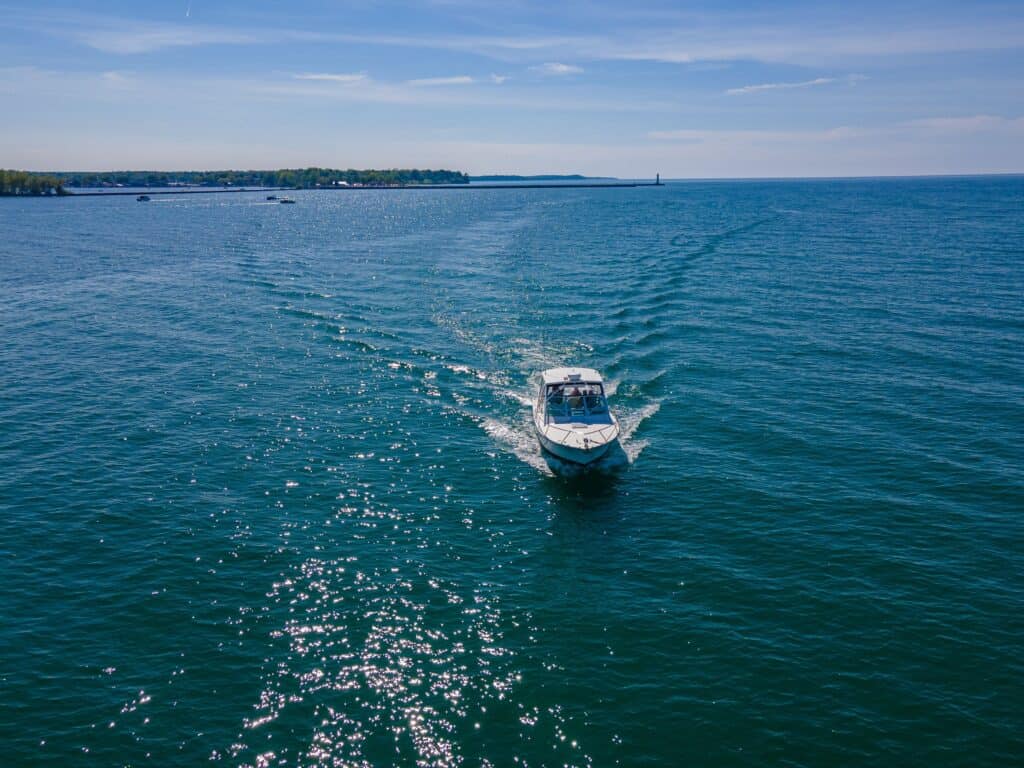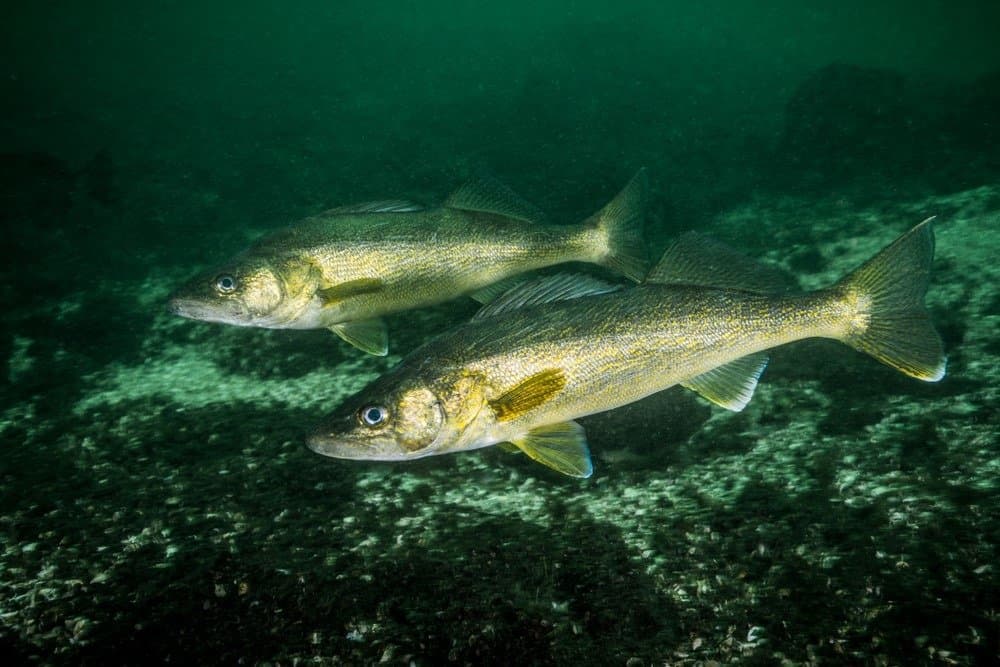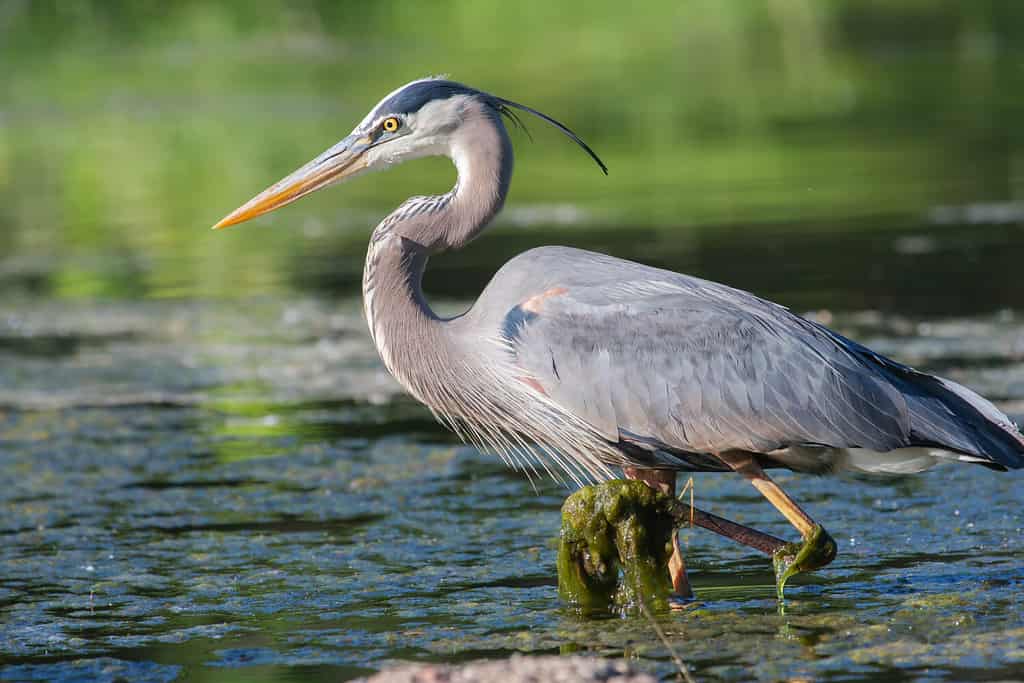Lake Ontario is the fifth-largest lake in the United States by surface area. It has a surface area of 7,340 square miles (19,011 square kilometers). The only lakes in the United States with a greater surface area than Lake Ontario are the four other Great Lakes. This article covers Lake Ontario’s maximum depth, average depth, and volume. It also explores the many rivers and tributaries that feed Lake Ontario, and how the surrounding communities use the lake’s water. Let’s dive in!

Lake Ontario is a massive lake in Canada and the Northeastern United States.
©Wirestock Creators/Shutterstock.com
What Is the Depth and Maximum Capacity of Lake Ontario?
How deep is Lake Ontario? Lake Ontario has an average depth of 283 feet (86 meters) and a maximum depth of 802 feet (244 meters). It is deeper than Lake Huron and Lake Erie, but shallower than Lake Superior or Lake Michigan. Lake Ontario’s volume is 391.4 cubic miles (1,631 cubic kilometers).

Where Is Lake Ontario?
Lake Ontario is on the border of the United States and Canada. The U.S. state of New York is to the south and the Canadian province of Ontario lies to the north. Several major Canadian cities are on the north shore of Lake Ontario, including Toronto, Hamilton, Kingston, and Mississauga. Rochester, NY is on the south shore of the lake.
Which Rivers and Tributaries Feed Lake Ontario?
11 major rivers drain into Lake Ontario. The Niagara River, which flows 36 miles (58 kilometers) from Lake Erie, is the main inlet of Lake Ontario. Additionally, the Black, Cataraqui, Don, Genesee, Humber, Oswego, Rouge, Little Salmon, Salmon, and Trent Rivers drain into Lake Ontario.

The Niagara River forms the Niagara Gorge along its course from Lake Erie into Ontario.
©Spiroview Inc/Shutterstock.com
Lake Ontario is the final lake in the Great Lakes chain, draining into the Atlantic Ocean via the St. Lawrence River. The eastern end of Lake Ontario is the beginning of the Saint Lawrence Seaway, which allows boats to travel from the Atlantic Ocean to the Great Lakes.
How Is Lake Ontario’s Water Used?
Lake Ontario provides drinking water for nine million people in Ontario and New York. It is also used for recreation including swimming, boating, and fishing. Lake Ontario also has two major ports, the Port of Toronto and the Port of Hamilton.
Why Is Lake Ontario So Popular?
Lake Ontario is incredibly important to the economy and ecosystem. It provides ports for economic activity and drinking water for millions of people. Additionally, it is a habitat for an abundance of wildlife.
Where is Lake Ontario Located on a Map?
Lake Ontario is the smallest of the Great Lakes and spans the border between the U.S. and Canada. The lake provides water for the people of New York and Ontario and features many lighthouses and islands.
Lake Ontario Recreation
There are endless opportunities for recreation on Lake Ontario. The lake offers swimming, boating, and fishing. Additionally, there are several campgrounds on and around Lake Ontario.
Lake Ontario Wildlife
Lake Ontario is home to an abundance of wildlife. Let’s explore some of the amazing species that live in and around the lake.
Walleye (Sander vitreous)

Walleye is native to the northern United States and Canada.
©RLS Photo/Shutterstock.com
The walleye is one of the most abundant fish in Lake Ontario. It is a popular species for commercial and recreational fishing in the Great Lakes. Other names for walleye include “yellow pike” or “yellow pikeperch”. Canadians in the province of Manitoba call them “pickerel”. Walleye typically grow as long as 31 inches and weigh up to 20 pounds. The largest walleye ever caught in Ontario lived in the Niagara River. This incredible fish was 36.5 inches and weighed a whopping 22.25 pounds.
Great Blue Heron (Ardea herodias)

Great blue herons are native to North, Central, and South America.
©Joseph Scott Photography/Shutterstock.com
The Great Lakes are home to many species of migratory birds, including the great blue heron. Great blue herons live and breed near Lake Ontario. The average great blue heron has a wingspan of 5.5 to 6.5 feet. These incredibly large birds nest in trees near water. Their diet is mainly fish.
Moose (Alces alces)

Moose are native to the Northern Hemisphere, including North America and Eurasia.
©ArtBBNV/Shutterstock.com
The moose is the largest species of deer in the world. Moose are typically 4.5 to 7 feet tall, with males taller than females. Additionally, mature male moose can weigh up to 1,500 pounds. Moose live in the forests of Canada, near the north end of Lake Ontario.
The photo featured at the top of this post is © Michael J. Eves/Shutterstock.com
Thank you for reading! Have some feedback for us? Contact the AZ Animals editorial team.






